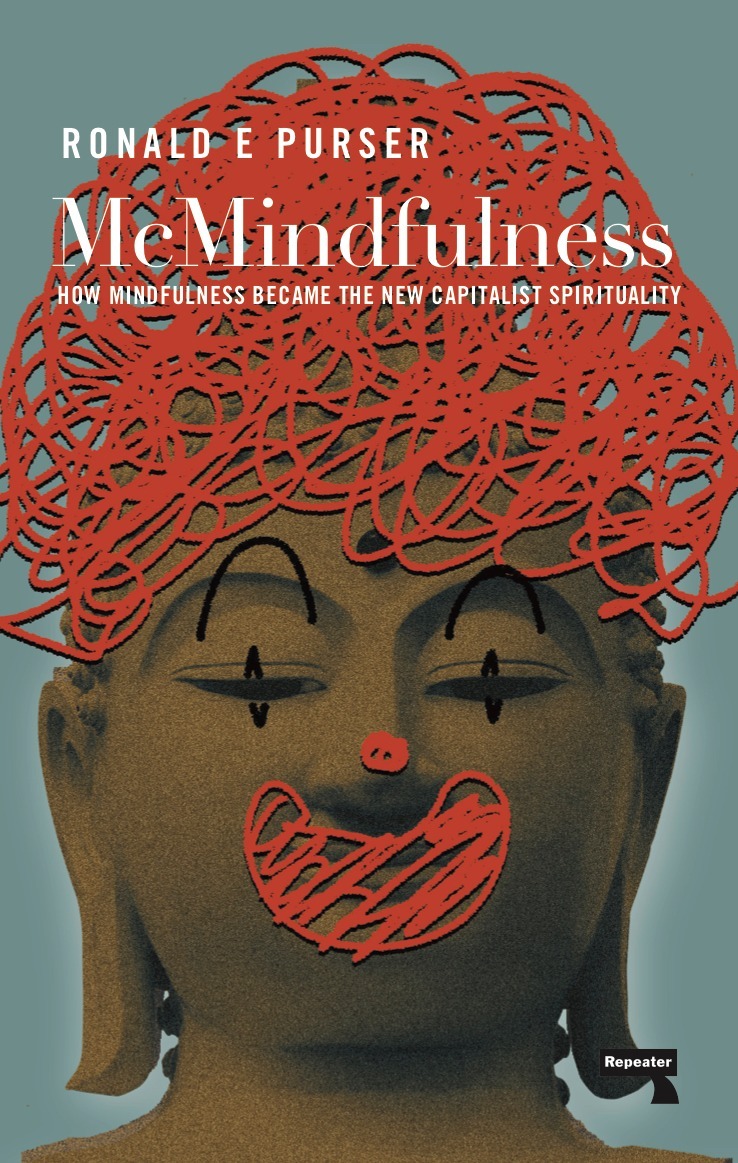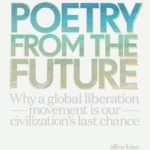
I felt there was an urgent need for a book presenting an explicitly critical account of mindfulness, not least to balance the positive presentation of mindfulness in popular self-help writing. So, my book is meant to be a “public intervention” – a wake-up call – not only by critically questioning the hype, hoopla and exaggerated claims of the so-called “mindfulness revolution,” but also exposing the ways mindfulness has been selectively appropriated and refashioned into an instrumental technique for personal gain.
I also wanted to expose how wealthy, white, Euro-Americans created an elite social movement that took what was once a practice aimed at spiritual liberation from selfishness and greed and turned it into a highly individualistic, do-it-yourself self-help technique. I wanted to provide an account of why “mindfulness” has become such a buzzword and popular practice in contemporary times. The book is meant for those who have a healthy skepticism towards self-help techniques, the ideology of happiness and wellbeing, and capitalist spirituality.
How would you define mindfulness, and McMindfulness? What makes them distinct?
Mindfulness even within Buddhism and its various schools is subject to varied understandings and applications, depending on the time period and context. Furthermore, mindfulness training represents only a tiny sliver of the plethora of Buddhist meditation methods.
Mindfulness is an English translation taken from the Sanskrit smrti or in Pali, sati. T. Rhys Davids, a Welsh Oriental scholar in the 19th century struggled with finding a suitable word. It was an Anglican prayer, “Be mindful of the needs of others—in other words, to always keep their needs in mind. However, in the Pali Canon – the earliest recorded teachings of the Buddha, sati has more to do with the ability to remember, to recollect, to call to mind – bring to mind and holding in mind certain reflections, instructions, and doctrines. In fact, in the classic Satipatthana Sutra, a core teaching on mindfulness in the Buddhist teachers – there is no mention or instruction to be in the present moment, or the now, non-judgmentally.
As the purpose and function of sati within the context of the Buddhist path is to put an end to suffering, mindfulness is not merely a passive and nonjudgmental attentiveness to the present moment exclusively but an actively engaged and discerning awareness that is capable of recollecting words and actions from the past as well. Right mindfulness, when properly cultivated and supported by other mental factors, can remember and know skilful as well as unskilful phenomena, in the past and in the present – with the intended purpose of abandoning those which lead toward suffering and stress in the future. Thus, right mindfulness is not simply bare attention to the present moment but includes both retrospective memory of the past and prospective memory of the present and future .
McMindfulness has downplayed or even ignored the cognitive dimensions involving judgment and discernment as well as the contingent role that ethical conduct plays in fostering the development of mindfulness. This has led to a very superficial and one-sided understanding of mindfulness as a form of therapeutically helpful sense of calm and quietness.
Promoters saw the utilitarian value of mindfulness in terms of providing individuals therapeutic benefits. However, in order to make mindfulness widely accessible to secular audiences, these promoters had to mystify mindfulness – covering up the fact that they selectively extracted and uprooted mindfulness from its grounding in a religious tradition which was informed not only on a foundation of morality and ethics, but which is motivated by liberation from the story of being a separate self and cultivating a compassionate commitment to act for the welfare of all sentient beings. It is this process of mystification that also accounts for the widespread misconception in the West that Buddhist practice is synonymous with mindfulness meditation.
McMindfulness represents then a quick-fix for the anxieties of late-capitalist society. Lacking an ethical and moral framework, McMindfulness can be deployed for instrumental aims – improving productivity and career success, better decision-making among hedge fund managers on Wall Street, creating better test-takers or military sharp-shooters.
You argue that mindfulness can actually deepen harmful free market ideology. How?
Like any other hot commodity, mindfulness has been refashioned to accommodate the needs of the market, obfuscating critical reflection on the systemic causes of our collective malaise and institutional stress. I take issue with the dominant psychological and scientific narratives that explain stress, disengagement, and discontent as a failure of individuals to take personal responsibility for their own self-care, social welfare and wellness. As a new brand of a capitalist spirituality, stress is privatised and pathologised. Privatising the causes of stress dovetails nicely with the assumptions of neoliberal, free market ideology.
If breathing exercises and so on help people avoid panic attacks, for example, does it matter if these practices are corporatised?
If you have a hostile boss breathing down your neck, and your only recourse is to resort to a breathing exercise to avoid a panic attack, there isn’t anything inherently wrong with that. The problem is not that people are getting individualistic benefits. It’s at the ideological level, maintaining a narrow way of framing human distress. That’s why I’m not blaming individuals that are taking up these practices, but am more concerned with the dominant cultural message that happiness is a skill – independent of your social conditions.
You write about different spiritual movements that have risen and fallen. Why has mindfulness boomed in recent years?
Mindfulness is now estimated to be a $1.5 billion industry. With its “sciencey-claims,” its promoted as cure-all and easily learned skill that will make you less stressed, happy and content – without any challenge to the existing social and political order of society. So it’s very appealing to corporations, for example. It isn’t really a social movement like the civil rights or women’s movements which opposed and confronted dominant institutions at the grass roots level. Instead, it has been led by elites and affluent professionals who have used their cultural capital to gain insider access to a variety of institutions including corporations, public schools, community agencies, government, and even the military. Mindfulness offers no challenges or threat to the status quo, which makes it very politically appealing.
What do you make of apps like Headspace and others that encourage people to meditate or be mindful?
Meditation apps have become McDonaldised, allowing them to be standardised, scaled-up and mass distributed just like a Big Mac. Like fast-food, apps are convenient, accessible, cheap and offer a quick-fix, low dosage burst of mindfulness – enough to put a band-aid on everyday anxieties.
The gamification of mindfulness through apps instills a form of self-surveillance, that we must constantly monitor our mental and emotional states, while giving us the false sense we need external technologies as a way of exerting executive control over our own bodies and minds. Such obsessive self-monitoring is driven by a moral imperative to be mindful, fit and healthy, but in isolation from others.
Apps such as Headspace are sending the wrong message. Mindfulness is not a DIY endeavour. Self-help apps fail because the stresses that put our lives in jeopardy in the first place remain in the world around us even after we’ve taken the “cures”. The fact is that people who can find the resources they require for success in their environments are far more likely to succeed than individuals who temporarily de-stress with an app.
You critique McMindfulness as putting the onus on the individual, rather than society. What would be a more useful approach?
When mindfulness practices are taught and practiced in ways that help people connect the dots between their personal troubles and public issues, it becomes “civic mindfulness”. When people practicing civic mindfulness gain insight that their personal troubles, addictions, worries, anxieties, and insecurities are linked to social and political conditions, and by sharing insights in a communal context, then bonds of solidarity that focus collective attention on the greater good. A civic oriented mindfulness goes beyond individualistic stress reduction and behavioural self-management. Civic mindfulness offers an opportunity to reorient these practices away from instrumental ends towards a more prophetic critique of neoliberal values, fostering a more socially-engaged commitment to social change and justice.


